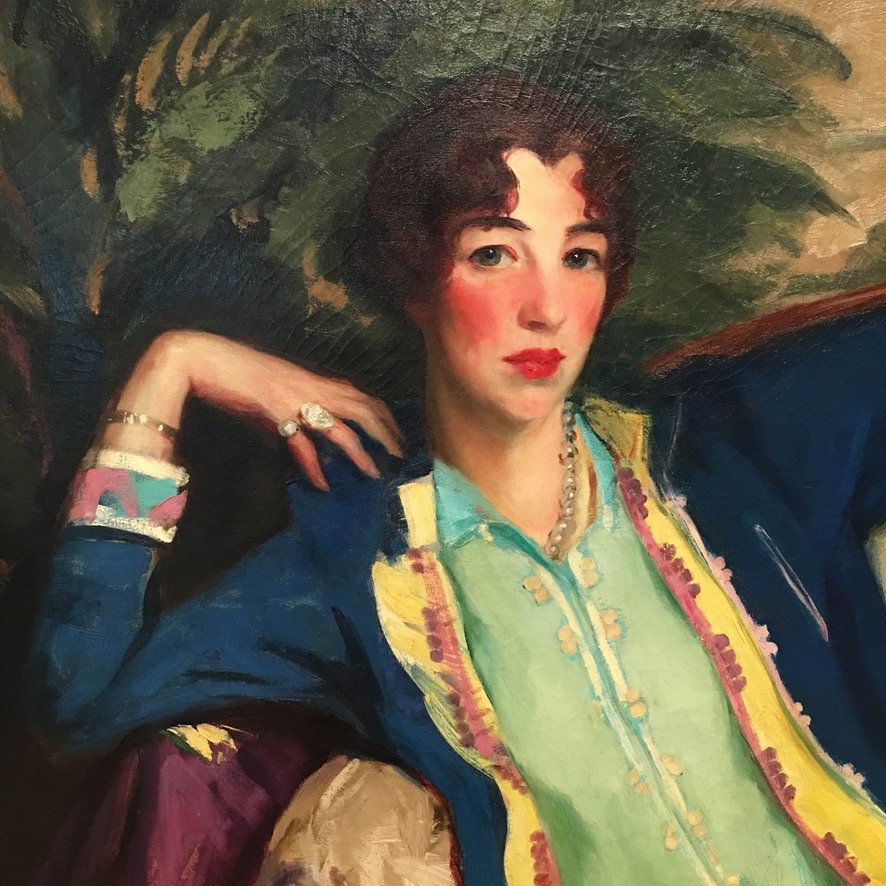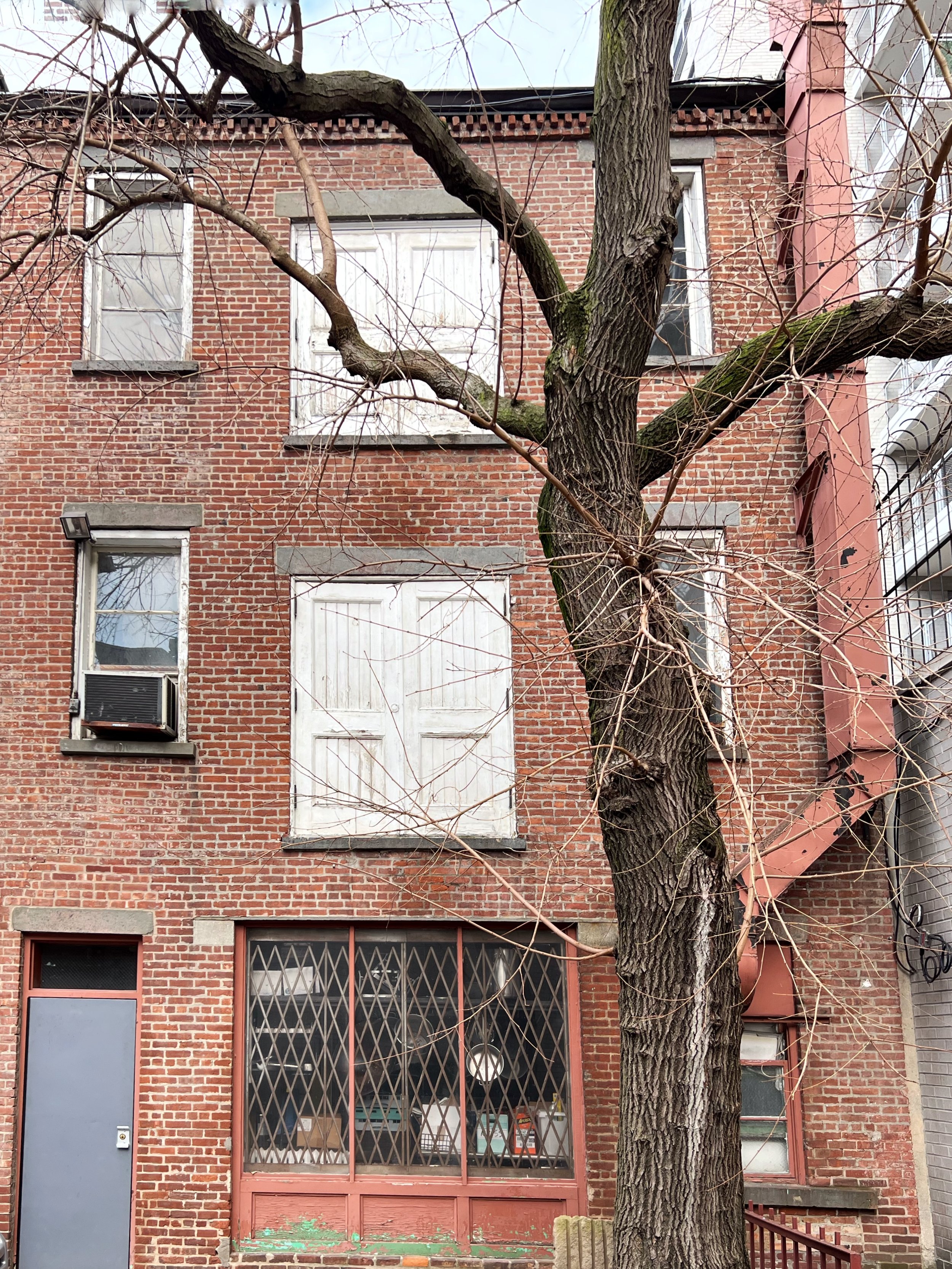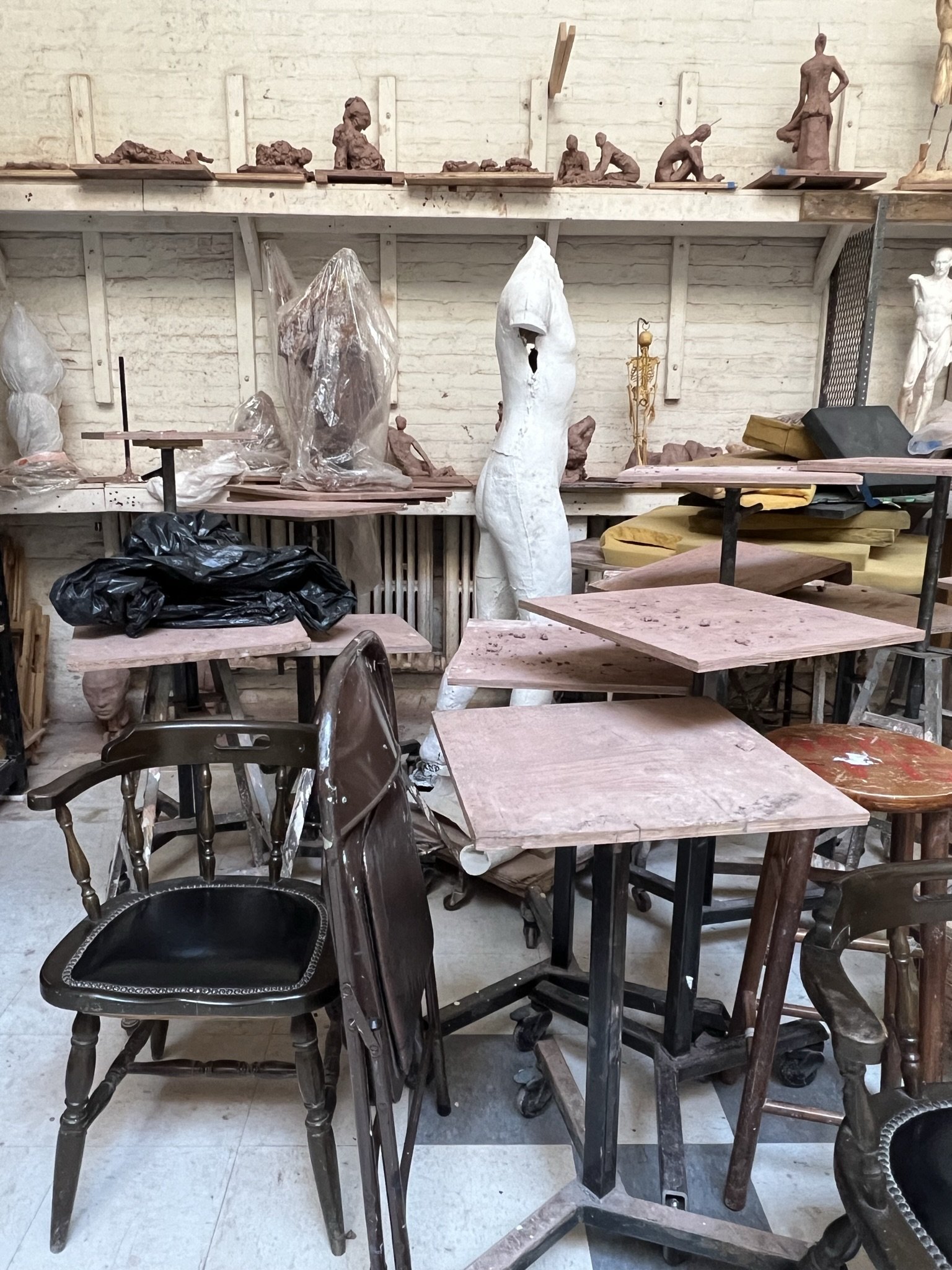Gilded Age Disrupter: Gertrude Vanderbilt Whitney
Detail from a portrait of Gertrude Vanderbilt Whitney by Robert Henri, 1916. Photo by Lynn Byrne
Gertrude Vanderbilt Whitney once wrote that one of her earliest memories was her longing to be a boy because she felt they got to do more. At age 4, noticing that her brothers didn’t have long hair, she thought she could fix the problem by cutting off her curls, only to find herself severely punished. Something in her character must have impressed her father, however, because he left the family fortune to her instead of her brothers, certainly not common among Gilded Age families. Gertrude used her wealth for many philanthropic endeavors, including establishing a hospital during World War I. She is well known for founding the Whitney Museum of American Art in 1931, after the Metropolitan Museum of Art infamously refused her donation of more than 500 works from her collection. Gertrude also decided to work in a male dominated field (when she had the means to not work at all) and became a renowned sculptor.
While Gertrude’s patronage of art and artists is well known, her own personal talents as an artist are not as widely recognized. She designed a number of public monuments, achieving her commissions through perseverance and a genuine passion. It was an uphill battle. The New York Times reports in her 1942 obituary that she was ridiculed for pursuing an artistic career, her friends smirking at her efforts and the general public believing that everything would be handed to her on a silver platter because of her rank.
Gertrude Vanderbilt Whitney at work. Photo via The New York Times.
Gertrude quietly persisted. She studied at the Art Students League of New York and in Paris receiving guidance from Auguste Rodin. In 1907 she established her studio in New York City in a hayloft on Macdougal Alley. It was considered scandal at the time with headlines proclaiming “Daughter of Cornelius Vanderbilt will live in dungy New York alley.”
The exterior of Gertrude Vanderbilt Whitney’s original hayloft studio on MacDougal Alley in Greenwich Village. Photo by Lynn Byrne.
Gertrude never actually lived there, just worked, but her personal studio is a marvel of a room. Designed by friend and artist Robert Winthrop Chanler, it sports a 20 foot bronze and plaster fireplace that was once painted in red and orange tones to evoke flames. The ceiling has a mythological frieze depicting dragons, mermaids and other fantastical creatures including two large octopuses. Originally the room had 7 stained glass windows. Today drawings of the original windows are placeholders in the hope that someday replicas can be fashioned.
This plaster and bronze fireplace in Gertrude Vanderbilt Whitney’s original studio was originally colored in flame tones. Photo by Lynn Byrne
Detail of the frieze in Gertrude Vanderbilt Whitney’s studio showing an octopus. Photo by Lynn Byrne
Drawings replicate the original stained glass windows in Gertrude Vanderbilt Whitney’s studio. Photo by Lynn Byrne.
The original stained glass designed by Robert Winthrop Chanler are now privately owned. Photo via Wikipedia.
Eventually Gertrude bought and combined 4 adjacent townhouses. This became the site of the first Whitney Museum but prior to the museum’s founding in 1931, Gertrude established the Whitney Studio Club for like-minded artists. I was told on a recent tour that Daniel Chester French, the sculptor who created the large statue of Abraham Lincoln for the Lincoln Memorial, was her colleague and he occasionally worked in the enlarged studio space she created next door to her original hayloft studio. The Whitney Studio Club also held regular exhibitions of then unrecognized American artists like Edward Hopper. Since 1967, the complex has housed the New York School of Drawing, Painting and Sculpture continuing the landmarked site’s artistic legacy.
The enlarged studio space next to Gertrude’s original studio where Gertrude sculpted many of her major commissions. Photo by Lynn Byrne.
Gertrude’s studio is still very much a working space used by students of the New York School of Drawing, Painting and Sculpture. Photo by Lynn Byrne.
The entrance of the original Whitney Museum as it looks today. Photo by Lynn Byrne.
Fabulous detail of the terrazzo floor of the original Whitney Museum. Photo by Lynn Byrne.
The lobby of the original Whitney Museum, c.1931-32 featuring a work by Gertrude. Photo via Wikipedia.
While promoting the careers of other artists, Gertrude unpretentiously achieved her own prominent commissions with installations in several countries. You can see her work here in New York City in Washington Heights and Stuyvesant Square.
Washington Heights-Inwood War Memorial (World War I), New York City by Gertrude Vanderbilt Whitney. Photo via Wikipedia.
Peter Stuyvesant, New York City. Photo via Wikipedia
The Titanic Memorial that she created in Washington DC must have been the inspiration for Kate Winslet’s iconic pose in the movie. The resemblance is uncanny.
The Titanic Memorial, Washington, DC by Gertrude Vanderbilt Whitney. Photo via Wikipedia.
When Gertrude sculpted a nearly nude figure for the headquarters of the Daughters of the American Revolution she received some criticism for the risqué attire. The draping clearly reveals the woman’s anatomy.
The Founders of the Daughters of the American Revolution, Washington, D.C. Photo via Wikipedia
Perhaps coincidentally, her granddaughter Laura Miller Biddle recalls that her grandmother “loved sensuous clothes.” Gertrude commissioned her own portrait in 1916 from Robert Henri wearing sexy silk pajama pants. At that time, woman in her class would not be seen in such clothing and her husband, Harry Payne Whitney, forbid her to hang it in their New York City townhouse. It now hangs at the Whitney Museum.
Portrait of Gertrude Vanderbilt Whitney by Robert Henri, 1916. Photo via Wikipedia.
This sculpture from 1914 entitled Chinoise by Gertrude Vanderbilt Whitney is said to be a self portrait. Photo by Lynn Byrne.
MacDougal Alley today. Photo by Lynn Byrne
The entrance to the original Whitney Museum. Photo by Lynn Byrne.
The original entrance. Photo via Wikipedia.





















